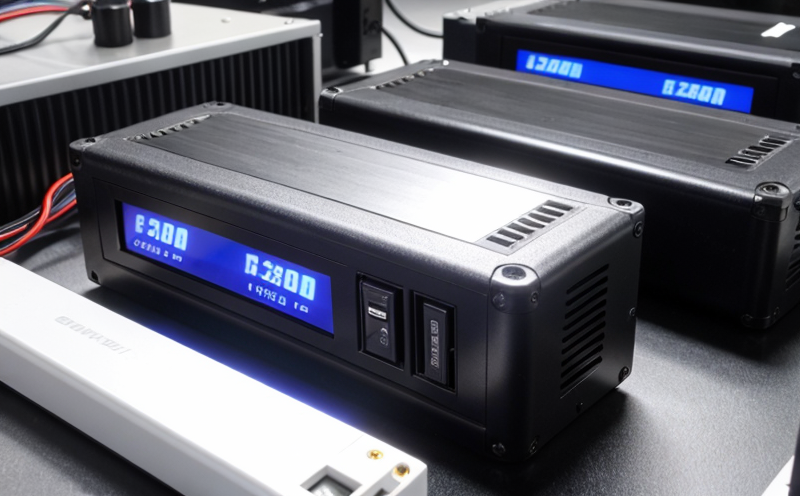JIS C8708 Lead-Acid Battery Performance Testing for Automotive Use
The JIS C8708 standard is an integral part of quality assurance and compliance in the automotive industry. This test method evaluates the performance characteristics of lead-acid batteries intended for use in automobiles, ensuring they meet stringent requirements set by international standards.
Batteries are critical components in automotive systems that ensure reliable power supply under various operating conditions. The JIS C8708 standard covers a range of tests aimed at assessing the electrical performance and durability of lead-acid batteries. These tests include, but are not limited to, charge-discharge cycles, internal resistance measurement, and high-rate discharge capacity.
The testing process involves detailed preparation steps that ensure accurate results. Batteries must be properly charged and discharged according to specified protocols. The internal resistance is measured using a suitable ohmmeter, while the high-rate discharge capacity is determined by discharging the battery at specific current rates. These tests are crucial for identifying any potential weaknesses or discrepancies in battery performance.
Compliance with JIS C8708 standards is mandatory for manufacturers aiming to secure market access and meet customer expectations. The test results provide valuable data that can inform design improvements, optimize manufacturing processes, and enhance product reliability. This ensures that batteries perform consistently across different environments and applications, contributing significantly to vehicle safety and performance.
The testing process must adhere strictly to the outlined methodology to ensure accurate and reliable outcomes. Deviations from these protocols could lead to inaccurate test results, which may have significant implications for battery design and manufacturing processes. Therefore, it is essential that all involved parties follow the prescribed procedures meticulously.
Scope and Methodology
| Test Parameters | Description |
|---|---|
| Charge-Discharge Cycles | The battery is subjected to multiple charge-discharge cycles under controlled conditions. The number of cycles and their duration are specified in the standard. |
| Internal Resistance Measurement | The internal resistance is measured using an ohmmeter. This helps assess the efficiency of the battery's electrical system. |
| High-Rate Discharge Capacity | The battery is discharged at high current rates to evaluate its ability to provide power under demanding conditions. |
This methodology ensures that the testing process is comprehensive and reproducible, leading to consistent results. The test parameters are carefully selected to cover various aspects of lead-acid battery performance, providing a holistic evaluation of their capabilities.
Benefits
- Enhanced Quality Assurance: Ensures that batteries meet the highest quality standards and perform reliably under various operating conditions.
- Mitigation of Risks: Identifies potential issues early in the development process, reducing the risk of product failures in the field.
- Compliance with International Standards: Helps manufacturers meet regulatory requirements and gain market access more easily.
- Better Product Design: Provides valuable insights into battery performance, aiding in the optimization of design parameters for improved efficiency and longevity.
The benefits extend beyond mere compliance; they also contribute to a safer and more efficient automotive industry. By ensuring that batteries perform reliably, the JIS C8708 standard supports the overall reliability and safety of automobiles, making them more trustworthy in the eyes of consumers.
Quality and Reliability Assurance
- Detailed Testing Protocols: The JIS C8708 standard mandates specific testing protocols that ensure consistent and accurate results. This minimizes variability in test outcomes, leading to more reliable performance data.
- Independent Verification: Results from independent laboratories can be cross-checked against the manufacturer's findings, ensuring accuracy and consistency across different entities.
The focus on quality assurance is not just about compliance; it is also about fostering trust and confidence in the products. By adhering to these rigorous testing standards, manufacturers demonstrate their commitment to excellence and reliability, which is crucial for building long-term customer relationships.





